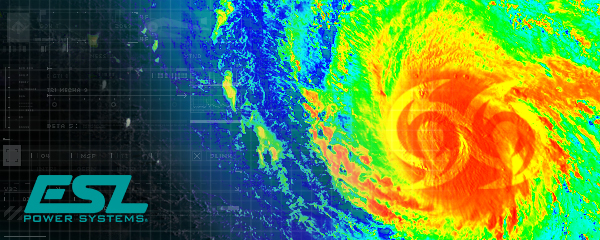
When Hurricane Michael made landfall on October 10th across the Florida coast and along the Gulf of Mexico it registered as a Category 4 and was the largest to ever hit the Florida Panhandle. By the time the storm subsided it had passed through Florida, Alabama, Georgia, Virginia and the Carolinas’. As of October 12th, over “1.4 million utility customers from Florida to Virginia were without power” according to cbsnews.com. This was likely due to the combination of high winds and heavy flooding taking out power lines and electrical stations. Estimates tracked wind speeds from 45 to 155 mph. Fortune.com predicts damage from the storm could cost up to $4.5 billion in Florida alone.
The frequency and ferocity of high category hurricanes has become increasingly troublesome in recent years and show no signs of slowing down. There are many reasons to be prepared for the worst case scenarios but the unpredictability of these weather patterns is reason enough to take their threat seriously.
Depending on what region of the country you live in, disaster preparedness needs can vary from one area to the next. For example, some areas are more prone to flooding than they are to earthquakes, so it is important to be knowledgeable about the potential disasters that may affect where you live. Tornados, hurricanes, earthquakes, fires and other disasters are often unpredictable. No matter where you live, there are a few steps that should be taken to help you be prepared for emergency situations at home and at work.
At Home:
Prepare a supply kit that has the essential items for the first 72 hours after an emergency. This includes water, non-perishable food, batteries, blankets, and first aid supplies. It’s also a good idea to write down the phone numbers and addresses of family and store it inside of your emergency kit. Finally, be sure to store the kit in a location where everyone can find it.
Once you’ve assembled your kit, you should discuss the plan of action for after an emergency. If needed, know how to shut off gas, electricity and water. How will you communicate with those closest to you? Texting is easier than calling in the moments following a disaster, and are a great way to let others know that you’re safe. You also need to discuss places to meet. Remember, different disasters may require you to go to different places; it’s a good idea to have a few meeting spots planned out ahead of time.
At Work:
As a business owner, being prepared means having an effective emergency backup system. An important step in implementing this system is selecting a manual transfer switch that can quickly and safely be connected to a generator should utility power be out for a prolonged period of time. In ESL’s blog, 6-Ways to Select a Manual Transfer Switch we cover the factors that should be considered when determining which type of transfer switch is most suitable for your business.
In addition to a reliable back up system, your company should have a plan. Determine how you’ll get your business back up and running. Make a Check list! Assign responsibilities and determine if additional training is necessary to perform the tasks assigned. Include a backup person responsible for a task if your primary is off site. For comprehensive steps for contingency planning check out our blog, Do You Have A Contingency Plan? The Cost of NOT Being Prepared.
Some disasters are unavoidable but taking these steps can help soften the blow when one does strike. By being proactive, you can minimize loss in both your personal and professional life. For more information, check out our article on Automatic vs. Manual transfer switches, which illustrates potential threats to a business in the event of a power outage.
If you have questions about Emergency Power preparedness needs for your business, we can help! Click here to request more info.